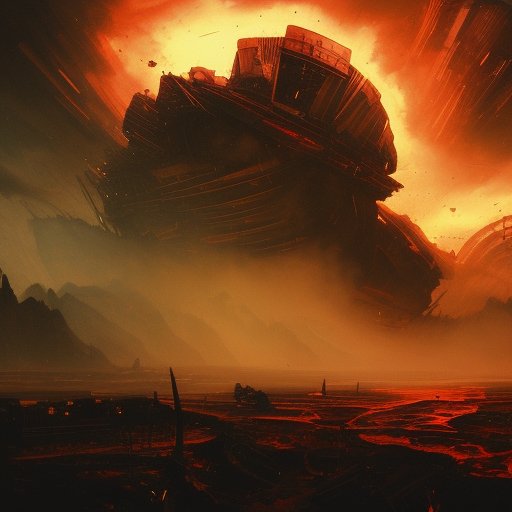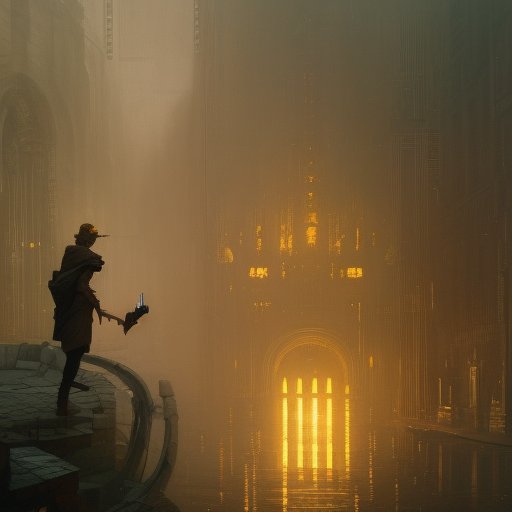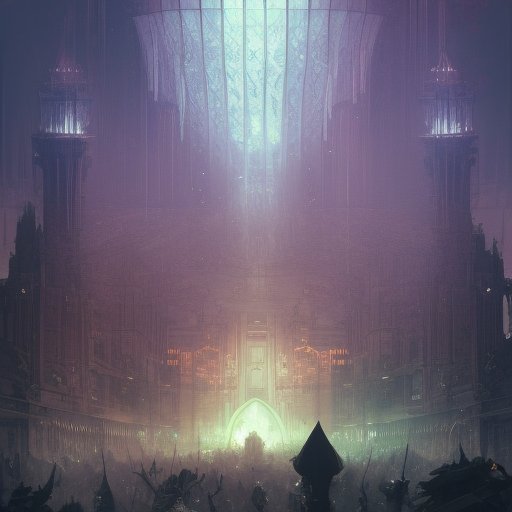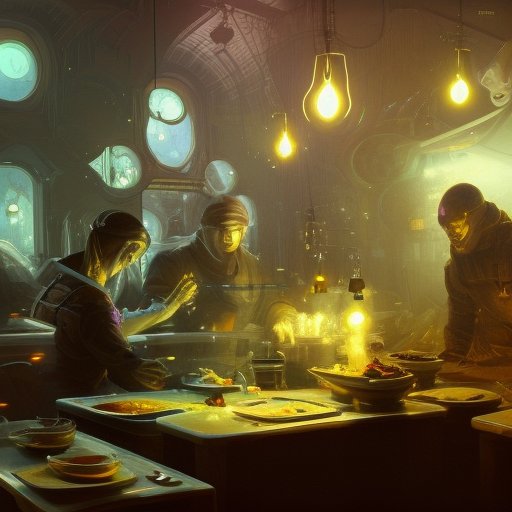
Breaking things with style and finesse has been a staple of science fiction since its early beginnings. However, in the fast-paced technological world of the future, it has become a necessity rather than a choice. In this article, we explore the science and mechanics behind the art of breaking things, and how it applies to science fiction. We delve into the latest tools and techniques for breaking things quickly, efficiently, and dramatically. Along the way, we highlight the top five sci-fi scenes of breaking things that exemplify the art of destruction. Whether you aspire to be a sci-fi writer, or an engineer looking to innovate, mastering the art of breaking things with style and finesse has never been more important.
I. Introduction
Buckle up tight, space travelers! The future is breaking down, and we need to stay ahead of the curve to ensure our survival. With rapid technological advancements, it has become increasingly vital to break things fast, effectively, and with style. Beyond just the thrill of adrenaline and excitement, breaking things has become the key to unlocking innovation, to enhancing our understanding of science and engineering.

From the tinkering of mechanics to the experimentation of chemistry, breaking things has been the foundation for countless scientific discoveries over the years, pushing the boundaries of what we know and what we’re capable of. And nowhere is this more true than in science fiction. Throughout history, the genre has relied heavily on the art of breaking things to create gripping and captivating stories that keep readers and viewers on the edge of their seats.
From the Starship Enterprise exploding in a blaze of glory to the Death Star’s stunning destruction, sci-fi has thrust us into worlds of technological advancement where breaking things with style and finesse is no longer a luxury but a necessity. Even in the dystopian universes of classics like Blade Runner and Dune, breaking things has been a tool for survival in a world pushed to its extreme limits.
Therefore, if we hope to shape the future, if we want to stay ahead of the curve, we must embrace the art of breaking things. From the smallest components to the biggest machines, we must learn to break things efficiently and dramatically, so we can uncover new possibilities and ignite our imagination. The future of space travel, virtual reality, and artificial intelligence (AI) depends on our ability to break things creatively and in unprecedented ways. So let’s hone our skills, unleash our creativity, and break things with style and finesse, pioneering a new era of scientific discovery in the cosmos beyond!
II. The Science Behind Breaking Things
Welcome back, fellow explorers. Now that we’ve established the importance of breaking things with style and finesse, let’s dive into the science behind it. Breaking things is no simple feat, and it requires a deep understanding of physics, mechanics, and chemistry. But before we get too technical, let’s take a step back and look at the big picture of how breaking things applies to science fiction.

First and foremost, the breaking things trope is an essential part of the narrative of science fiction. It’s key to creating suspense, raising stakes, and making the story more dramatic. Whether it’s destroying the enemy’s battle station or smashing the enemy’s robot, breaking things increases the reader’s or viewer’s emotional investment in the story. When things break, it forces the characters to adapt to a new situation, making for a more compelling narrative.
But how do we pull off the illusion of breaking things so effectively? It all comes down to a careful balance of science and aesthetics. The physics behind breaking things is relatively simple: the force of impact applied to an object overcomes its structural integrity, causing it to break. However, the art of breaking things is where things get interesting.
From the color of the explosion to the way the debris falls, every aspect must be crafted with meticulous attention to detail. These elements are what make the breaking of things truly remarkable and reinforce the sense of depth and immersion in science fiction worlds.
With the advancement of technology, the art of breaking things has become more realistic than ever. 3D modeling allows explosions and destruction to be created with greater realism, giving science fiction fans a taste of what it might be like to be on the front line of conflict, standing alongside their favorite characters. And as physics and engineering continue to develop, so too will the art of breaking things.
So what’s next? Stick around as we delve into the tools and techniques that make breaking things an art form, from explosives to electromagnetism, and everything in between. We’ll explore how the latest technology can make breaking things faster, more efficient and more dramatic than ever before, and how it can inspire us to innovate in science, engineering, and beyond.
III. Tools for Breaking Things
Ladies and gentlemen, are you ready to explore the future of sci-fi tech? Let’s dive into the world of the latest advancements in tools and gadgets that can break things with style and finesse.

From laser cutters to plasma cannons, sci-fi is full of amazing tools that allow us to break things in dramatic and unexpected ways. One of the most popular tools in science fiction is the ion disruptor, which releases a burst of charged particles that can break down molecules in seconds. Another interesting gadget is the graviton beam emitter, which uses gravity manipulation technology to tear apart even the sturdiest of structures. And let’s not forget about sonic disruptors, which use sound waves to shatter materials into tiny pieces.
In the world of hacking and cyber security, we have an entirely different set of tools. Nanobots are perhaps the most infamous sci-fi technology when it comes to breaking down computer systems. These tiny robots can infiltrate the most secure networks and wreak havoc from the inside out. Another tool used by some of the best hackers is the reverse engineering gadget, which allows them to break down an application to its core code and alter it from the inside.
But it’s not just futuristic, fictional tools that are shaping the world of breaking things. Things we thought were once impossible are now becoming a reality. From 3D printers to augmented reality, we have a range of new tools with which we can break objects and environments in unprecedented ways. We can use a simple 3D printer to create intricate models that we can crush, smash, and explode, gaining valuable insights into the mechanics and materials of objects.
In the end, the only limit to the tools we can use to break things is our imagination. As we continue to push the boundaries of science and engineering, there will always be new and exciting tools at our disposal. Who knows? Maybe one day we’ll have access to a tool that can literally break the fabric of space and time itself. So, let’s keep pushing the boundaries, let’s create new tools, and let’s break things in ways we never thought possible. The future of breaking things is limitless!
IV. Techniques for Breaking Things
Alright, space cadets, get your thinking caps on tight! Now that we understand the science and mechanics of breaking things, let’s talk about how to break things with a touch of flair and style.

Firstly, speed and precision are critical when it comes to breaking things down. You don’t want to catch your enemies off guard, only to fumble with your weapon or machinery. Equip yourself with the tech and training to execute your plan seamlessly and in a flash.
Secondly, creating a focused distraction can be the key to successful breaks. In the world of sci-fi, this could mean a flashy display of fireworks or advanced technology to divert attention, so you can sneak in undetected and break things on time.
Thirdly, the environment in which you’re breaking things is essential. This could involve making use of your surroundings with some epic tilting, turning, or falling structures to create dramatic scenes of destruction.
Fourthly, thinking on your feet is vital when breaking things. Being versatile and unpredictable is often the best way to stay one step ahead of your enemies. You might cook up some unusual chemical reactions or take action with unorthodox weaponry to break down barriers and achieve your goals.
Finally, maintaining control over the situation is the key to success in the art of breaking things. You want to unleash your energy and creativity but keep your eye on the prize. Avoid a situation where you break things at the expense of your own safety and the safety of others.
By mastering these techniques, you can bend the laws of physics and mechanics to break things with style and finesse in ways you never thought possible before. You’ll be unstoppable, creative, and effective in breaking down obstacles and pushing the boundaries of what’s possible in the cosmos. So fasten your seatbelts, and let’s break things with some PIZZAZZ!
V. Top 5 Sci-Fi Scenes of Breaking Things
Hold onto your hats, folks, because we’re about to take a trip down memory lane with the top 5 sci-fi scenes of breaking things!

First up, we have the unforgettable moment in Independence Day when alien ships descend upon Earth, blowing up the White House in a blaze of glory. This cinematic masterpiece showed us that breaking things could be a thing of beauty, with the iconic image of destruction still fresh in our minds over two decades later.
Next on the list, we have the dramatic destruction of the Death Star in A New Hope, giving us one of the most unforgettable scenes in cinematic history. This explosive moment showed us the power of the Force combined with a skilled pilot and a little bit of luck, catapulting us into a galaxy far far away.
In third place, we have the iconic moment in The Matrix when Neo dodges bullets in slow motion, diving off of walls and breaking through concrete to escape the agents. This scene brought a new meaning to “bullet time” and showed us that breaking things could be done with style and finesse.
Fourth on our list is the dramatic moment in War of the Worlds when the alien tripod machines rise up from under the ground, destroying everything in their path. This scene touched on our primal fears of invasion and destruction, while showcasing the epic power of breaking things done with stunning visual effects.
And last but not least, we have the unforgettable scene in Jurassic Park where the T-Rex breaks free from its cage, shaking the ground and roaring triumphantly. This scene showed us that breaking things isn’t just about surviving a crisis, but about unleashing our primal nature and living life to the fullest.
These top 5 sci-fi scenes of breaking things showcase the immense power of destruction, but also the artistry and creativity that can come along with it. From aliens and spacecraft to dinosaurs and bullets, the future of science fiction will continue to break new barriers and push the limits of what we think is possible. So let’s embrace the art of breaking things, and see where it takes us in the endless universe of possibility!
VI. Conclusion
By understanding the science and mechanics behind it, we can break things effectively and aesthetically, letting our creativity run wild with opportunities for advancement and progress.

More than that, we can learn from sci-fi classics and new technological advancements that show how breaking things with style can transform the future for the better. Sci-fi has the power to inspire humanity, to ignite our imagination and fuel our dreams.
In the words of the great sci-fi writer, Ray Bradbury, “You must stay drunk on writing so reality cannot destroy you.” The art of breaking things allows us to break down walls of possibility and shatter barriers. It is the catalyst for stepping into a bold and dynamic future where our dreams have become reality. So, let us keep breaking things, keep pushing the boundaries, and keep chasing the stars. The universe of tomorrow is infinite, and it’s waiting for us to break things in style and finesse.






